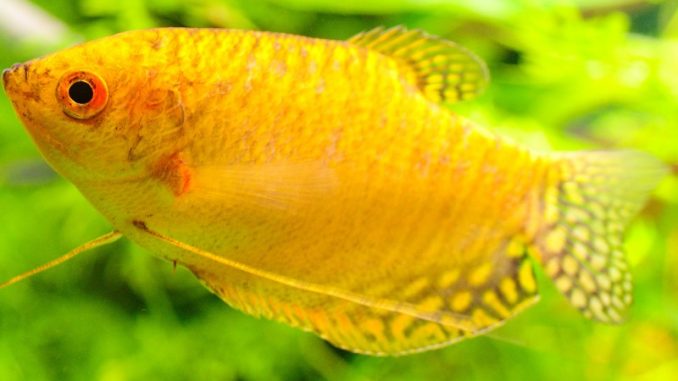
Native to Southeast Asia, the gold gourami is a freshwater aquarium fish that is part of the Osphronemidae family. First appearing on the market in 1970, it has grown in popularity due to its ease of care and mild temperament.
Gold gouramis are a color variation of the three spot gourami, but they lack the two distinct spots on their body. Their gold and orange color makes them a vibrant alternative to other gourami fish.
The gold gourami is a community fish and can share an aquarium with other fish, but it does get more aggressive with age. Choosing the right companion fish is essential to keeping a happy aquarium.
TABLE OF CONTENTS
Gold Gourami Facts & Overview
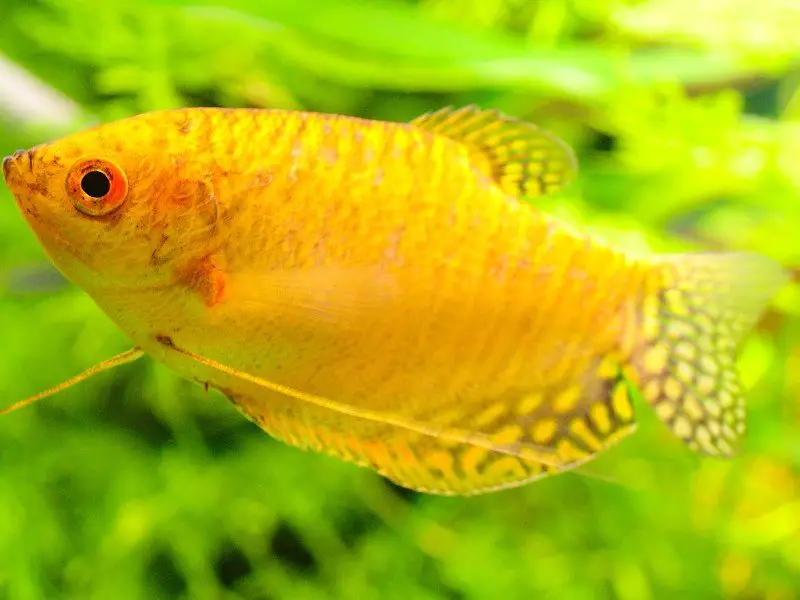
| Category | Rating |
| Care Level: | Easy |
| Temperament: | Semi-aggressive |
| Color: | Various colors, patterns, and shapes |
| Lifespan: | 4–6 years |
| Size: | Up to 6 inches long |
| Diet: | Omnivore |
| Family: | Osphronemidae |
| Minimum Tank Size: | 35 gallons |
| Tank Set-Up: | Freshwater, plants, caves |
| Compatibility: | Similar size and temperament |
There are 86 species of freshwater fish belonging to the Osphronemidae family, including the gold gourami (Trichopodus trichopterus). The scientific name comes from the three-spot gourami, of which the gold gourami is considered a color morph. Color variations of the same fish can happen through genetic mutations passed down over time.
Gold gouramis are native to Southeast Asia and Indonesia, but can’t be found in the wild. They are captive-bred, meaning they are bred and raised specifically for aquarium life.
They prefer areas with shallow water and not much water flow. If they were found in the wild, good environments to replicate are marshes, swamps, and canals.
Gold gouramis are popular and readily available in most big-box pet stores, but you can also find them online for about $6 each. With the right care and attention, they can live up to 6 years.
Appearance & Behavior
The first thing that catches your eye about the gold gourami is its distinct color. The body can be a deep gold or a bright orange and yellow, with a striped pattern extending along the back.
Two big factors that affect coloration are mood and tank condition.
The mood of gold gourami can be affected by other fish in the tank, especially if they are a larger and more aggressive species. You might think filling your tank with different types of gourami is a good idea, but not all of them are created equal.
For instance, the kissing gourami is aggressive towards fish that look like themselves and can grow to twice the size of gold gourami.
So if you have a bully in the tank-like kissing gourami, the stress can cause gold gourami to pale or turn black. If your tank conditions aren’t up to par, like not regularly changing the water, this can also lead to color changes.
In general, the gold gourami’s fins are rounded and large. Males have a longer, pointier dorsal fin while the female has a shorter, rounded one. Gold gouramis can reach up to 6 inches in size but can be smaller depending on the size of your aquarium.
Typical Behavior
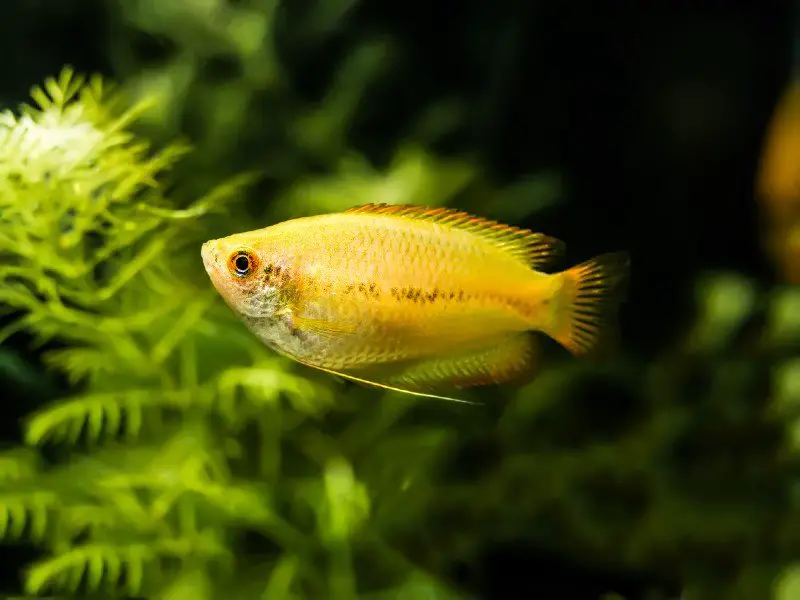
Gold gouramis tend to be more hostile compared to other fish in the gourami family, especially the males. As they mature and grow in size, they might become more aggressive and start to exhibit behaviors like ramming, attacking, and hunting smaller fish.
While this species is semi-aggressive, it can be a good community fish with the right tank companions. Be sure to stock your aquarium with fish of all personality types, but make sure they are of similar size to your gouramis.
Due to their labyrinth organ, gold gouramis can breathe air from the surface of the water as well as through their gills, so they spend a lot of time roaming all areas of the tank. They are generally slow-moving, so be sure to provide a variety of landscapes like tall plants and caves.
The male gold gourami fish will also use the surface to build bubble nests. Once the female lays eggs, the bubble nest is used to protect them until they hatch.
Gold Gourami Care
Gold gouramis are one of the hardiest, beginner-friendly fish you can buy. They can survive in a tank with varying oxygen levels, water temperature, and pH.
This means diseases aren’t usually an issue if your aquarium is taken care of. Diseases like fin rot and hole in the head might persist if your aquarium is overcrowded or has poor water quality.
As an omnivore, gold gouramis can eat just about anything — plants and animals alike. They’ll eat live, flaked, or freeze-dried food.
Habitat and Tank Requirements
Gold gouramis aren’t found in the wild, but they prefer an environment where the water is calm and has a variety of plant life to find cover.
You should decorate your tank in a way that mimics a marsh or swamp. Provide your fish with an abundance of hiding places, shallow vegetation, and floating plants. Just make sure to leave room at the surface so they can get some air.
Overcrowding can be avoided by choosing the right tank size for your fish family. You need at least 35 gallons for happy gourami. Keep in mind the size and number of companion fish you’ll have in the tank as well.
Tank Conditions
Although gold gouramis are hardy and can survive varying conditions, they thrive when tank conditions are ideal.
When you first set up your tank, choose a filter with a gentle to moderate water flow. Gouramis don’t like environments with a strong current, so consider using a sponge filter.
Fish do their best when the water pH level matches their natural environment. pH level indicates how acidic or alkaline the water is. For gouramis, keep the pH at a neutral level, between 6 and 8. The lower the pH level, the more acidic the water is. This can be harmful to the fish and cause their skin to burn.
Water temperature is important too, especially for breeding. Since gouramis breathe air at the surface, try to keep the water temperature and room temperature at the same level. Anywhere between 73° to 82° F is ideal.
Tank Mates
Gold gouramis are slow-moving, tank exploring fish. They won’t do well paired with highly active fish who like to chase and nip. It’s important to choose tank mates that will be compatible.
Good companion fish include plecostomus, cherry barbs, and mystery snails. They have similar personality types and requirements as gouramis.
Since gold gouramis have larger fins, avoid any fin-nippers like tiger barbs and blue tetras.
As they mature, gouramis tend to get more aggressive towards smaller prey in the tank. Steer clear of any species under 4 inches in size, including dwarf shrimp and other small fish.
Diet and Feeding
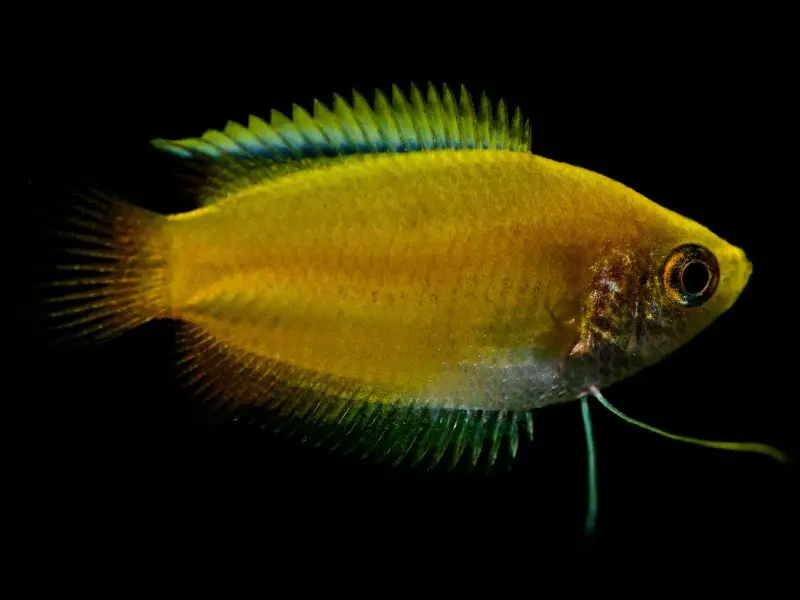
Gold gouramis are omnivores, meaning they can eat vegetables and meat. They’ll need a balanced diet of vegetables paired with live, flake, and pellet foods.
Flake food and pellets should be the base of their diet. There are a variety of brands to choose from and your gourami will like them all.
Fresh vegetables like zucchini and peas paired with leafy greens are a good supplement to their flaked food.
Live food such as small fish, dwarf shrimp, and worms make a good treat as well.
Generally speaking, gold gouramis only need to be fed once or twice per day.
Breeding
Breeding gold gouramis is an easy, straightforward process. Follow the 5 steps below for a successful spawn:
- Make sure your gouramis are happy. Conditioning them with food a few times a day will prime them for breeding. Additional feeding helps the female fill up with eggs.
- You’ll need to set up a breeding tank that’s at least 15 gallons. Set your tank up for success by adding floating plants and a gentle filter. Keep the water temperature around 80° F.
- Add your healthy fish to the breeding tank. The male gourami will build a bubble nest at the surface and attempt to woo the female. If he’s successful, they’ll mate and the eggs will float to the surface and be captured by the bubble nest.
- The male will guard the nest, so it’s time to remove the female fish for safety reasons. Once the eggs start to hatch, remove the male from the breeding tank as well so he doesn’t eat the fry.
- Take care of your new fry. Feed them liquid food until they’re large enough to incorporate other stuff into their diet.
Should You Get a Gold Gourami for Your Aquarium?
You should get gold gourami for your aquarium if you want a resilient, hardy, beginner-friendly fish that will add a vibrant pop of color to your tank.
They are easy to take care of and can make good companions for other fish if you take the right precautions.

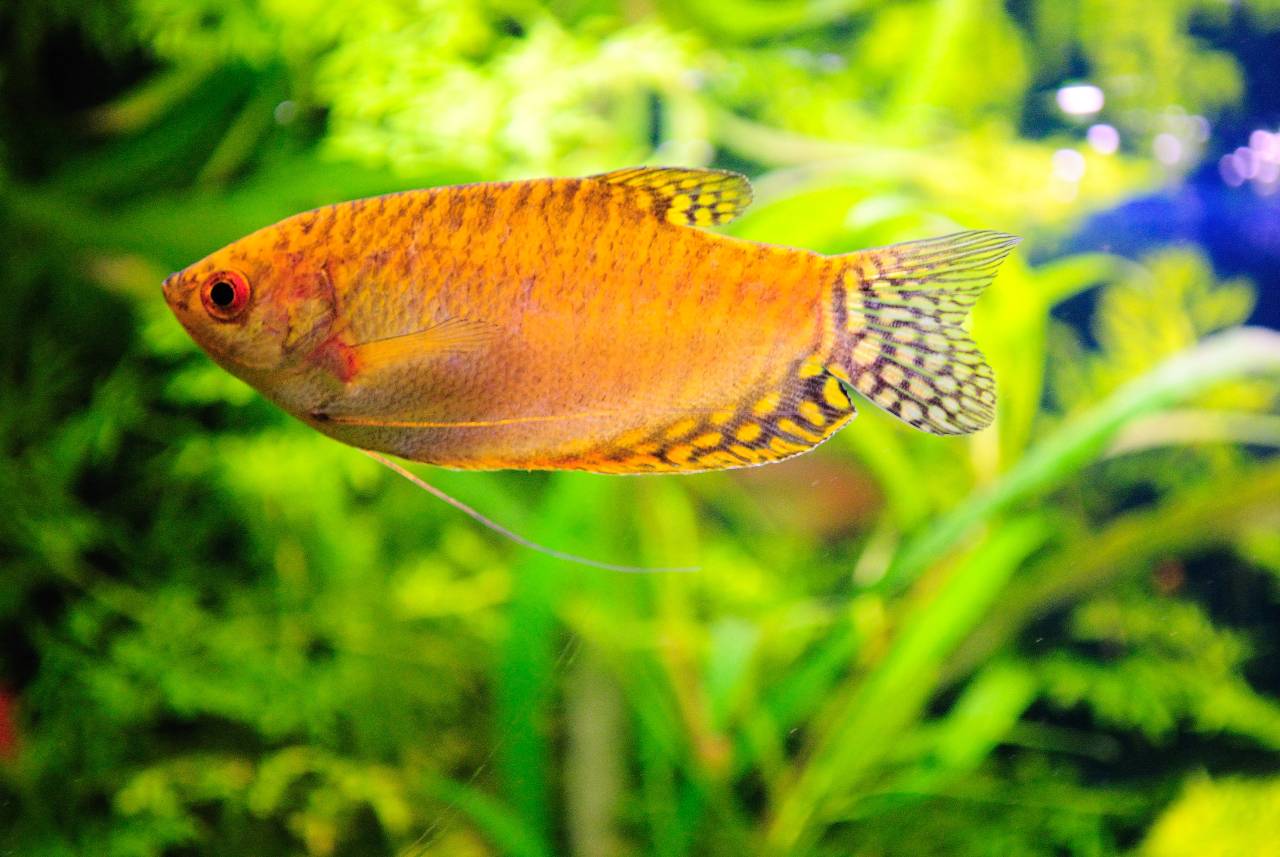
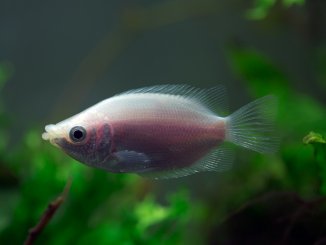
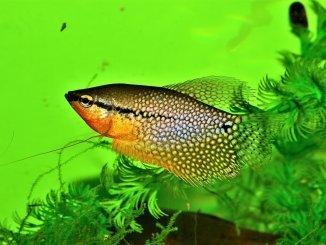
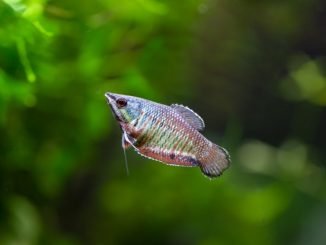
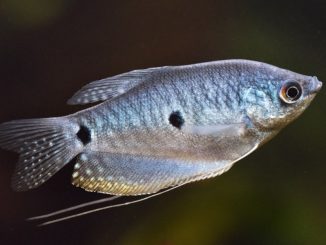
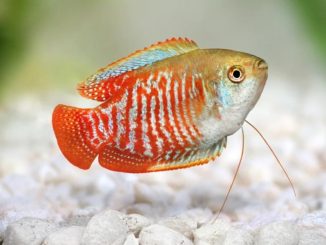
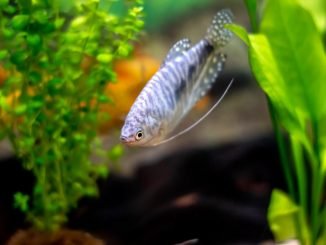

Be the first to comment